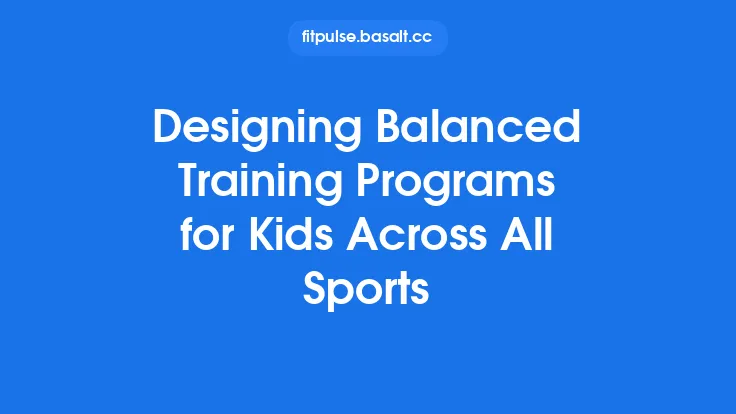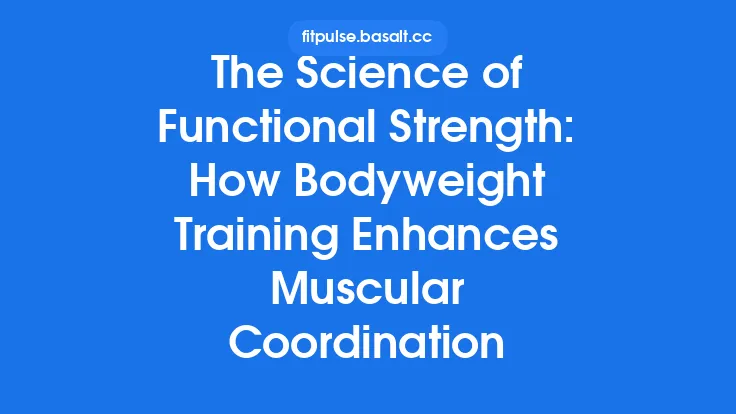The concept of transfer of training lies at the heart of why athletes, clinicians, and everyday exercisers can take a skill learned in one context and apply it successfully in another. While the brain’s ability to acquire new motor patterns is a well‑studied topic, the mechanisms that allow those patterns to “jump” across activities are equally important for designing effective, real‑world programs. This article explores the principles, mechanisms, and practical strategies that enable learned motor skills to be generalized, ensuring that time spent in the gym, on the field, or in the clinic yields benefits far beyond the specific drills performed.
Understanding Transfer of Training
Transfer of training refers to the extent to which learning in one task influences performance in a different, but related, task. In exercise science, this can mean that a squat technique improves a jump, that balance work on a wobble board enhances single‑leg landing stability, or that a rehabilitation protocol for knee extension speeds up return‑to‑sport for a soccer player. Transfer is not automatic; it depends on the interaction between the learned motor program, the new task’s demands, and the context in which both are performed.
Two overarching questions guide the study of transfer:
- What characteristics of the original learning experience make it more likely to be useful elsewhere?
- How can practitioners structure training to maximize positive transfer while minimizing negative or neutral effects?
Types of Transfer: Near, Far, Positive, and Negative
| Transfer Type | Definition | Typical Example in Exercise |
|---|---|---|
| Near Transfer | Application of a skill to a task that shares many structural and functional elements with the original. | Using a deadlift technique to improve kettlebell swing performance. |
| Far Transfer | Application of a skill to a task that is less obviously related, often requiring abstraction of underlying principles. | Translating core stability learned in Pilates to better posture during long‑distance running. |
| Positive Transfer | The learned skill enhances performance on the new task. | Mastering a proper hip hinge in squats reduces injury risk during sprint starts. |
| Negative Transfer | The learned skill interferes with performance on the new task. | Over‑reliance on a high‑heel gait pattern from dance can impair efficient running mechanics. |
Understanding where a given training goal falls on this spectrum helps practitioners decide how much specificity versus generalization is needed.
Theoretical Foundations
1. Schema Theory and Generalized Motor Programs
According to schema theory, each practice episode updates a motor schema—a set of abstract rules that define how to adjust force, timing, and coordination for a class of movements. When a new task shares enough parameters (e.g., joint angles, force vectors), the existing schema can be re‑parameterized rather than built from scratch, facilitating near transfer.
2. Dynamical Systems Perspective
From a dynamical systems view, movement emerges from the interaction of task constraints, organism constraints, and environmental constraints. Transfer occurs when the constraints of the new task align sufficiently with those of the original, allowing the same attractor state (stable movement pattern) to be accessed.
3. Transfer‑Appropriate Processing (TAP)
TAP posits that memory performance is optimized when the cognitive processes engaged during learning match those required during retrieval. In motor learning, this translates to matching attentional focus, decision‑making demands, and sensory feedback between training and the target activity.
Factors Influencing Transfer
Task Similarity and Component Overlap
The most robust predictor of transfer is the degree of shared components—muscle activation patterns, joint kinematics, and temporal sequencing. Even when surface features differ, deep structural similarity (e.g., a hip‑dominant power phase) can drive transfer.
Contextual and Environmental Consistency
Training in an environment that mimics the target setting (surface type, equipment, visual cues) strengthens the coupling between the learned motor program and the new context. For instance, practicing plyometrics on a grass field better prepares a soccer player for match conditions than using a rubberized indoor floor.
Cognitive Demands and Perceptual Coupling
When the original task requires similar perceptual–action coupling (e.g., reacting to a moving target) as the target task, the neural pathways governing anticipation and decision‑making are more readily reused.
Individual Differences
- Expertise Level: Novices often benefit from highly specific training, whereas experts can leverage more abstract schemas for far transfer.
- Age and Developmental Stage: Younger athletes display greater plasticity, making them more receptive to far transfer, while older individuals may need more explicit bridging strategies.
- Physical Capacity: Strength, flexibility, and balance constraints can limit the expression of a transferred skill; addressing these baseline capacities is essential.
Designing Training for Transfer
Embedding Transfer Goals from the Outset
Before a program begins, define explicit transfer objectives (e.g., “improve lateral cutting speed after a single‑leg squat progression”). This focus guides exercise selection, sequencing, and evaluation.
Purposeful Variable Practice (Without Over‑Emphasis)
While variability is a separate topic, incorporating targeted variations—such as altering load, stance width, or speed—can expose learners to a broader range of task parameters, strengthening the underlying schema for later transfer.
Use of Analogies and Metaphors
Analogical reasoning helps athletes abstract core principles (e.g., “push the ground away like a spring”) and apply them across contexts. This cognitive bridge is especially useful for far transfer.
Progressive Complexity and Functional Integration
Start with isolated, high‑fidelity drills that capture the essential movement pattern, then embed them within compound, sport‑specific scenarios. For example:
- Phase 1 – Isolated Hip Hinge: Romanian deadlifts focusing on posterior chain activation.
- Phase 2 – Integrated Load Transfer: Kettlebell swings adding a vertical jump component.
- Phase 3 – Game‑Realistic Application: Sprint starts from a low squat position on a turf field.
Each step preserves the core motor program while adding layers of context that promote transfer.
Cross‑Training and Complementary Modalities
Incorporating different movement systems (e.g., swimming for upper‑body endurance, yoga for core stability) can create a network of overlapping schemas, enhancing both near and far transfer.
Cross‑Disciplinary Applications
| Source Activity | Transfer Target | Mechanism of Transfer |
|---|---|---|
| Resistance Training (e.g., squat) | Vertical Jump | Shared hip‑dominant power generation and neuromuscular recruitment patterns. |
| Balance Board Work | Single‑Leg Landing | Overlap in ankle‑stability and proprioceptive feedback loops. |
| Pilates Core Series | Running Economy | Transfer of trunk rigidity and diaphragmatic breathing to improve postural control during gait. |
| Boxing Footwork Drills | Agility Ladder | Similar lateral displacement and rapid direction changes. |
| Rehabilitation of ACL | Cutting Maneuvers in Soccer | Re‑established knee joint torque patterns applied to sport‑specific deceleration. |
These examples illustrate how a well‑designed program can leverage a single skill set to produce performance gains across a spectrum of activities.
Assessment and Measurement of Transfer
Transfer Tests and Indices
- Pre‑ and Post‑Intervention Performance Metrics: Compare baseline and post‑training scores on the target task.
- Transfer Index (TI):
\[
TI = \frac{\text{Post‑Target Performance} - \text{Pre‑Target Performance}}{\text{Post‑Source Performance} - \text{Pre‑Source Performance}}
\]
A TI > 1 indicates greater improvement on the target task relative to the source task, suggesting strong transfer.
Ecological Validity Considerations
Testing should occur in realistic settings (e.g., on the competition surface, with sport‑specific equipment) to ensure that observed gains reflect true transfer rather than laboratory artifacts.
Retention and Decay
Long‑term follow‑up (e.g., 4–6 weeks post‑intervention) helps differentiate temporary performance spikes from durable transfer effects.
Practical Guidelines for Practitioners
- Define Transfer Objectives – Write them as measurable statements (e.g., “increase 10‑m sprint split time by 0.05 s after a 6‑week hip‑hinge program”).
- Map Overlapping Components – Use a matrix to align source and target task variables (muscle groups, joint angles, sensory cues).
- Select Representative Exercises – Choose drills that capture the highest proportion of shared components.
- Incorporate Contextual Cues – Replicate visual, auditory, and tactile cues from the target environment during training.
- Monitor Transfer Progress – Use the Transfer Index or similar metrics at regular intervals.
- Adjust Based on Data – If TI remains low, increase task similarity, add analogical instruction, or modify environmental constraints.
- Educate the Athlete/Client – Explain the purpose of each exercise in terms of the target activity to enhance motivation and cognitive engagement.
Common Misconceptions
- “Specificity always trumps transfer.” While specificity is vital for elite performance, a balanced approach that includes strategically chosen generalizable elements can accelerate skill acquisition and reduce injury risk.
- “If a skill works in the gym, it will automatically work on the field.” Transfer depends on contextual alignment; neglecting environmental cues often leads to poor performance when the skill is applied elsewhere.
- “More variety equals more transfer.” Random variability without purposeful linkage can dilute learning. Transfer benefits from targeted variation that mirrors the demands of the target task.
Future Directions and Research Opportunities
- Neuroimaging of Transfer Networks – Mapping how generalized motor schemas are re‑engaged across tasks could refine training prescriptions.
- Machine‑Learning Models for Predicting Transfer – Using large datasets of athlete performance to identify which training variables most reliably predict far transfer.
- Transfer in Multi‑Modal Rehabilitation – Investigating how combined strength, balance, and cognitive training influence return‑to‑sport outcomes.
- Longitudinal Studies on Transfer Decay – Understanding how long transferred skills persist without continued reinforcement.
- Individualized Transfer Profiling – Developing assessment tools that quantify an individual’s propensity for near vs. far transfer, guiding personalized program design.
By recognizing the principles that govern transfer of training, practitioners can move beyond isolated exercise prescriptions and craft programs that bridge the gap between the gym and the real world. Whether the goal is to improve athletic performance, accelerate rehabilitation, or simply make everyday movements more efficient, a strategic focus on transfer ensures that every rep, set, and drill contributes to a broader repertoire of functional skill.





